Use this guide if you are in immediate danger. Please see our Emergency Preparedness webpage to learn more about preparedness efforts you can strengthen resiliency. Click the hyperlinks below to jump to each type of emergency.
- Campus Emergency Contact Numbers
- Utility Failure
- Medical Emergency
- Mental Health Emergencies / Suicide Threats
- Suspicious Person
- Severe Weather / Natural Disaster
- Fire/Fire Alarm / Hazardous Materials
- Bomb Threat / Suspicious Package
- Shelter In Place / Lockdown / Evacuation
- Active Threat / Shooter
- Laboratory Emergency Response
Campus Emergency Contact Numbers
If you discover an emergency on campus:
- Call campus police/safety at the numbers listed below
- Stay calm
- Follow all RAVE alerts
- Give your name and location, and follow emergency-specific instructions provided on this webpage
- Only listen to certifiable sources relating to an evolving situation
| COF Institution | Campus Police/Safety | Health Services | Counseling and Wellness | Facilities/Buildings/Grounds | Additional Contacts |
|---|---|---|---|---|---|
| Simmons University | (617) 521 – 1111 | (617) 521 – 1020 | (617) 521 – 2455 | (617) 521 -1000 | |
| Massachusetts College of Art and Design | (617) 879 – 7800 | (617) 879 – 5220 | (617) 879 – 7760 | (617) 879 – 7800 | |
| Massachusetts College of Pharmacy and Health Sciences | (617) 732 – 2900 | (617) 732 – 2900 | (617) 732 – 2837 | (617) 732 – 2900 | x2222 on any campus phone |
| Wentworth Institute of Technology | (617) 989 – 4444 | (617) 879 – 5220 | (617) 989 – 4390 | (617) 989 – 4550 | (888) 894 – 1601 Wentworth Alert Line |
| Emmanuel College | (617) 735 – 9888 | (617) 264 – 7678 | (617) 735 – 9920 | (617) 735 – 9950 | (617) 735 – 9999 Emergency Notification Hotline |
Utility Failure
Definition: When any type of utility and/or facility-related system is interrupted or fails, such as electricity, heat, or ventilation.
Actions:
- For non-emergency utility issues, please contact facilities and/or Buildings and Grounds.
- For all utility emergencies, contact campus police/safety.
- If evacuating the building is required, use stairwells. DO NOT USE ELEVATORS.
- IF IN A LAB OR STUDIO SETTING – End activities that require ventilation, power, or hazardous materials. Secure your environment and clean up or put away equipment and hazardous materials. Follow your laboratory/studio emergency shutdown procedure if you are able to do so safely.
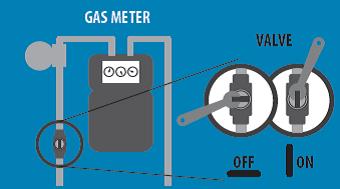
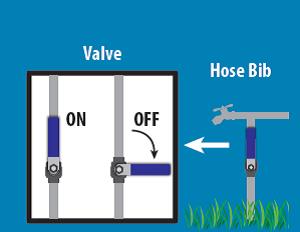
Medical Emergency
CLICK HERE TO CALL CAMPUS CONTACT NUMBERS
Definition: An injury or illness that poses a risk to a person’s life or health.
Actions:
- Call campus police/safety immediately.
- Follow all instructions given by campus police/safety.
- Protect yourself and others; be aware of your surroundings.
- Try to avoid contact with blood or bodily fluids.
- Do not move an injured person unless you are able to do so safely without incurring further injury.
- When possible, remain with the injured person until campus police/safety and/or medical personnel arrive.
- Administer CPR or first aid only if you are trained/certified and feel comfortable doing so. Reminder images are below.
- Use Stop the Bleed techniques listed below if someone is bleeding excessively.
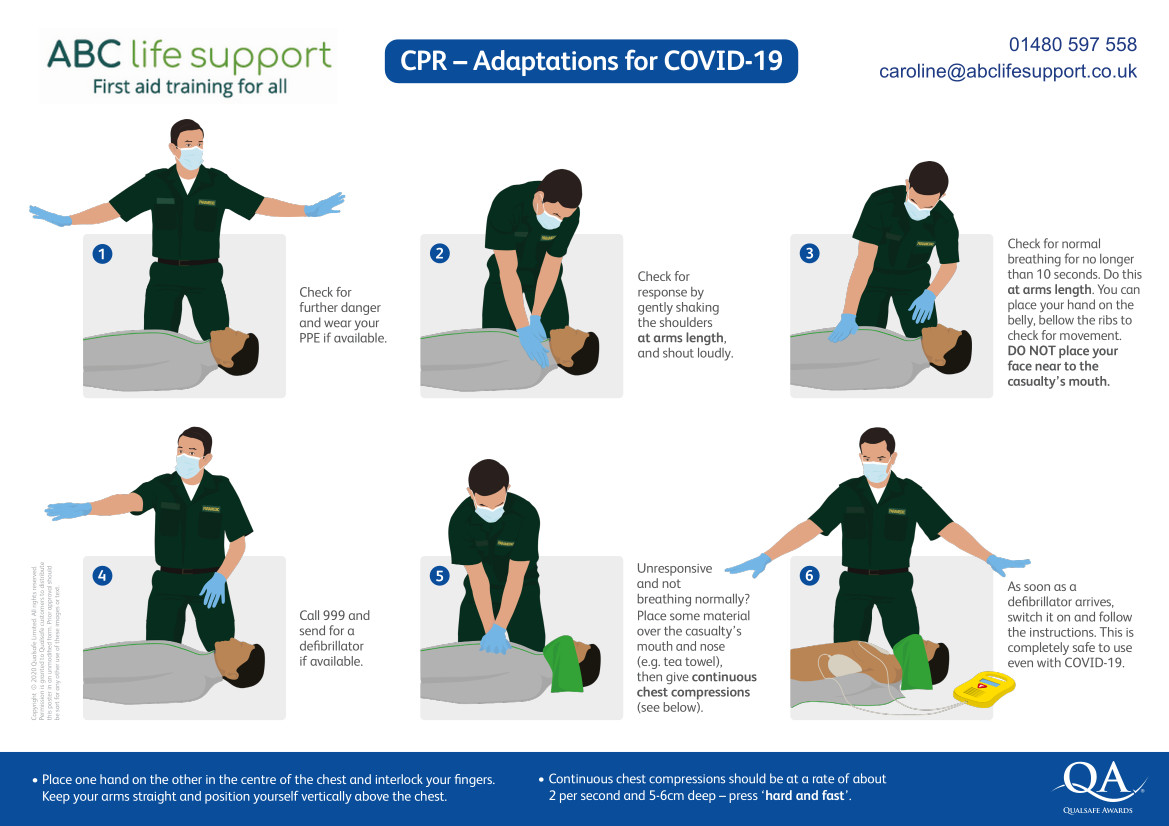
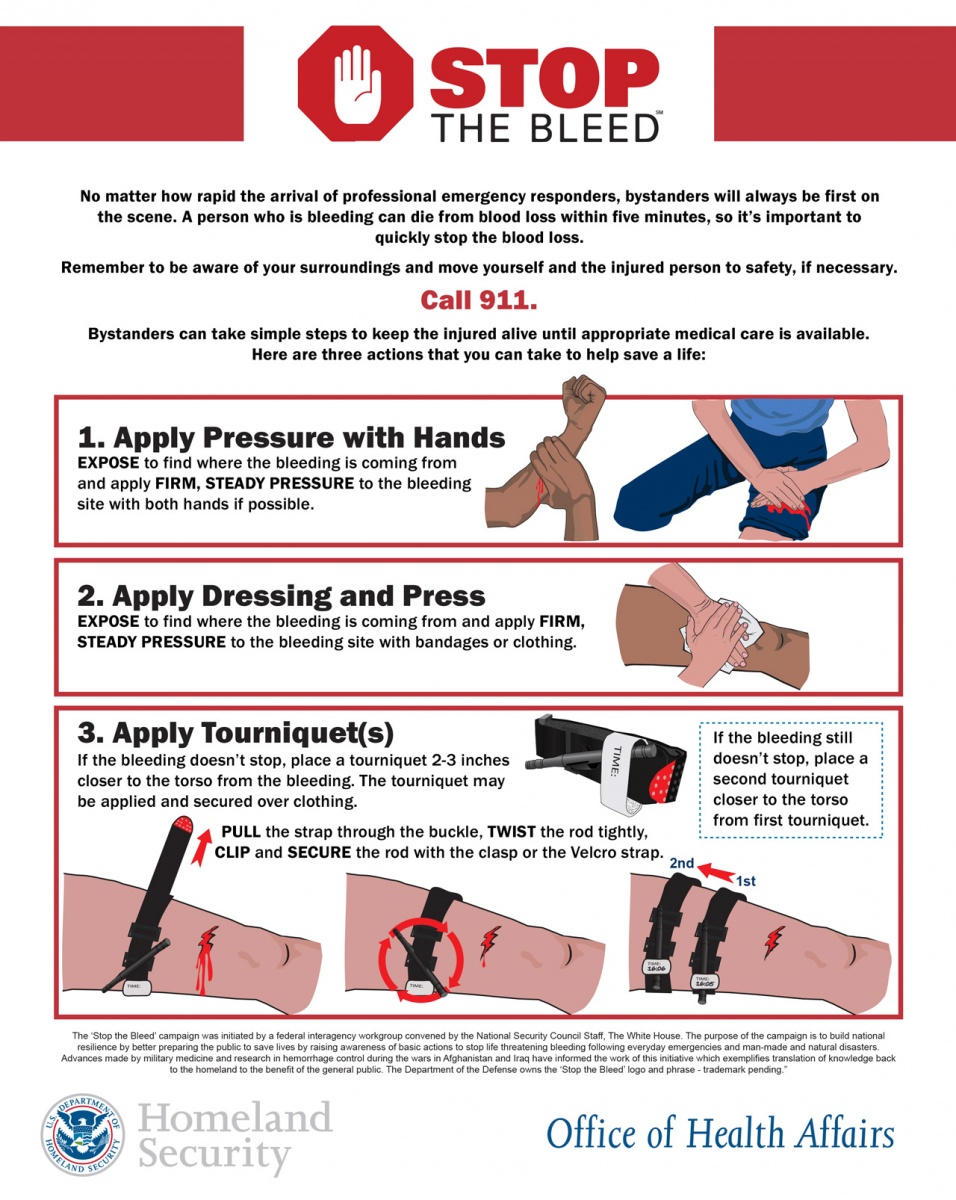
Mental Health Emergencies/ Suicide Threats
CLICK HERE TO CALL CAMPUS CONTACT NUMBERS
Helping Someone with a Mental Health Crisis / Suicide Threat:
- Listen to the person.
- Recognize warning signs.
- Stay with the person.
- Call or text the SAMHSA’s National Helpline at 1 (800) 985 – 5990 or text “TalkWithUs” to 66746
- Call the Domestic Violence Hotline at 1 (800) 799 – SAFE (7233) or text “START” to 88788
- Call or text the Veterans Crisis Line at 1 (800) 273 – 8255 or text 838255
- Call or text the National Suicide Prevention Lifeline at 988
Immediate Mental Health Crisis / Suicide Threat:
- ON-CAMPUS – Call Campus Police/Safety
- OFF-CAMPUS – Call 9 -1 – 1 for local police response.
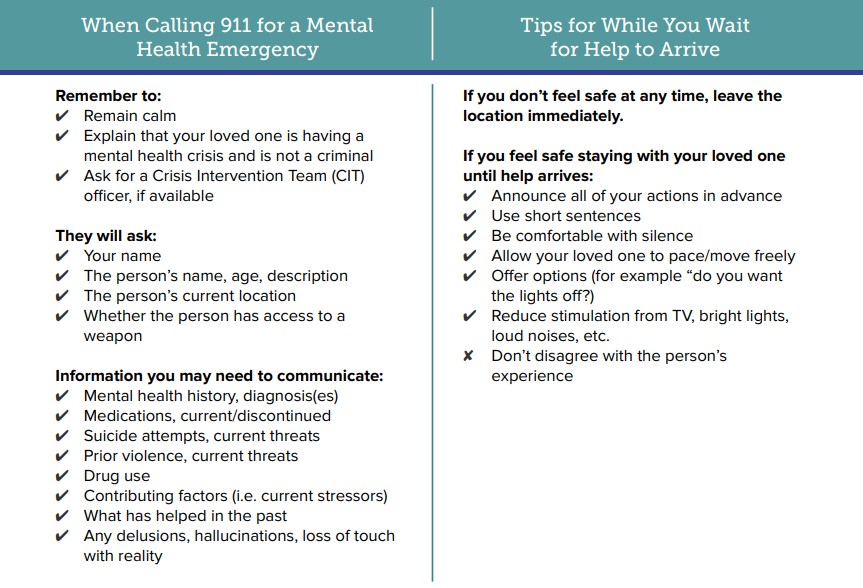
Potential Mental Health Crisis / Suicide Threat
- Presented by a student – Call Student Affairs.
- Presented by Staff or Faculty – Call Campus Police/Safety.
- Presented by Affiliate Member of the Community: Call Campus Police/Safety.
Suspicious Person

CLICK HERE TO CALL CAMPUS CONTACT NUMBERS
Definition: A person or multiple people demonstrating unusual/threatening behavior.
Suspicious Activity Includes:
- Individuals actively furtively and suspiciously.
- Individuals departing quickly when seen or approached.
- Individuals forcing their way into a locked area or vehicle.
- Individuals showing unusual mental or physical symptoms.
Actions:
- Notify Campus Police/Safety
- Be prepared to tell police/campus safety personnel who or what you saw, when you saw it, where it occurred, and why it is suspicious.
Severe weather / natural disaster
CLICK HERE TO CALL CAMPUS CONTACT NUMBERS
Definition: A significant weather emergency that may impact the area such as a snowstorm, hurricane, severe thunderstorm, or tornado. These events may cause strong winds, hail, ice, or snow.
Actions:
Inclement Winter Weather (Snow, Ice/Wind)
- Monitor RAVE Alerts (email, text, the College/University website).
- Closing or other restrictions of travel can be monitored through email/text alerts, TV, radio, and the college website.
- Monitor other state and local alert systems, which you can register for on the COF Emergency Management landing page.
Hurricane / Severe Storm / Flooding:
- Monitor RAVE Alerts (email, text, the College/University website).
- When advised, evacuate to designated safe areas.
- If able, remove items from windows and secure loose objects.
- Stay indoors during high winds and keep away from exterior walls and doors.
- Remain in a safe area until the warning expires or until an “All Clear” announcement is made by RAVE or by emergency personnel.
- IF IN A LAB OR STUDIO SETTING – End activities that require ventilation, power, or hazardous materials. Secure your environment and clean up or put away equipment and hazardous materials. Follow your laboratory/studio emergency shutdown procedure if you are able to do so safely.
Fire / Fire Alarms / Hazardous Materials
CLICK HERE TO CALL CAMPUS CONTACT NUMBERS
Implement RACE principles:
- R – RESCUE – people in immediate danger if you can do so without endangering yourself.
- A – Alarm – Pull fire alarm and call 9 – 1 – 1
- C – Contain – If able, contain the fire by closing all doors, windows, and other openings.
- E – Evacuate – the area. Do not use elevators unless authorized by emergency personnel.
Extinguish the fire using a fire extinguisher only if you have been trained to do so. Remember PASS:
- P – Pull
- A – Aim
- S – Squeeze
- S – Sweep
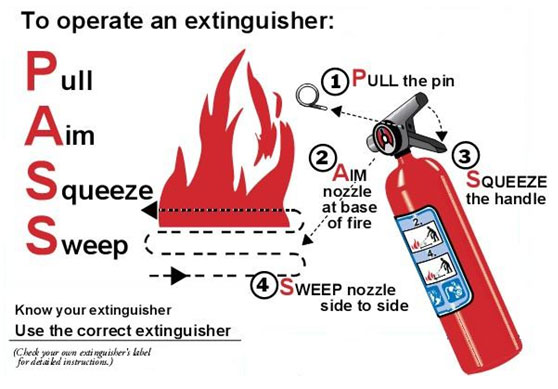
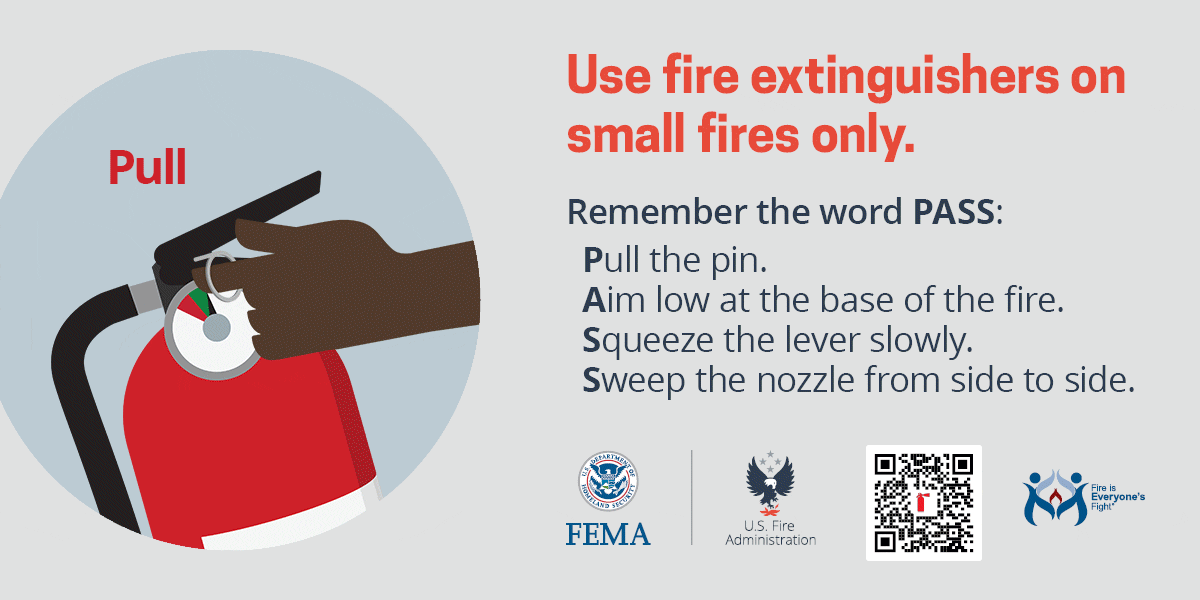
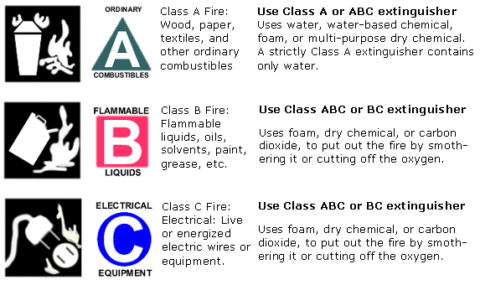
Hazardous Materials: On Campus
- Isolate area of spill/leak. Do not attempt to clean.
- Call Campus Police/Safety.
- Follow instructions given by emergency personnel for shelter-in-place or evacuation.
- If possible, note any characteristics about the material: name, odor, color, and physical description.
- Report any injuries or exposure to campus safety immediately.
Hazardous Materials: Near Campus
- Campus police and the institution’s incident management team will be notified.
- Follow emergency alerts for shelter-in-place or evacuation instructions.
Bomb Threat / Suspicious Package
CLICK HERE TO CALL CAMPUS CONTACT NUMBERS
Bomb Threat
Step 1: If you receive a bomb threat…
- Do not hang up.
- Remain calm.
- Try to prolong the conversation and get as much information as possible.
- Note what you hear. Are there background noises, such as music, voices, or cards?
- How does the caller’s voice sound? Any accent? What age? Any unusual words or phrases?
- How is the bomb location described?
- Does the caller use a person’s name?
- Does the caller give his/her name?
Step 2: Call Campus Police/Safety and report a bomb threat. Give the operator all the information you collected on the checklist. Identify yourself – give your name, address, and phone number.
Step 3: If evacuating is deemed necessary, you will be notified by RAVE or an overhead speaker system. Evacuate via the primary route for your area or the alternate route if so directed.
Suspicious Package
Keep in mind that an explosive, or other life-threatening items (razorblades, anthrax) can be enclosed in either a parcel or an envelope, and its outward appearance is limited only by the imagination of the sender. However, suspicious packages have exhibited some unique characteristics which might assist you.
- Suspicious packages are normally dropped off at a location and not sent via mail.
- Unfamiliar return address or none at all. Suspicious packages might bear restricted endorsements such as “personal” or “private.” This is important when the addressee does not normally receive personal mail at the office.
- Strange odor or noise. Suspicious packages or articles might make a buzzing or ticking noise or sloshing sound.
- Protruding wires.
- Excessive postage. Suspicious packages or articles might be unprofessionally wrapped with several combinations of tape used to secure the package and might be endorsed “Fragile-Handle with Care” or “Rush-Do Not Delay.”
- Misspelled words. The addressee’s name and/ title might be inaccurate.
- Addressed to a business title only (e.g., President).
- Restrictive markings (e.g., Do not X-ray, rush delivery, etc.).
- Badly typed or written. The addressee’s name and/ title might be inaccurate.
- Lopsided or uneven. Suspicious packages or articles might have an irregular shape, soft spots or bulges.
- Excessive wrapping, tape or string. Letter bombs might feel rigid or appear uneven or lopsided.
- Oily stains, discoloration or crystallization on wrapping.
- Leaking. Suspicious packages or articles might make a buzzing or ticking noise or sloshing sound.
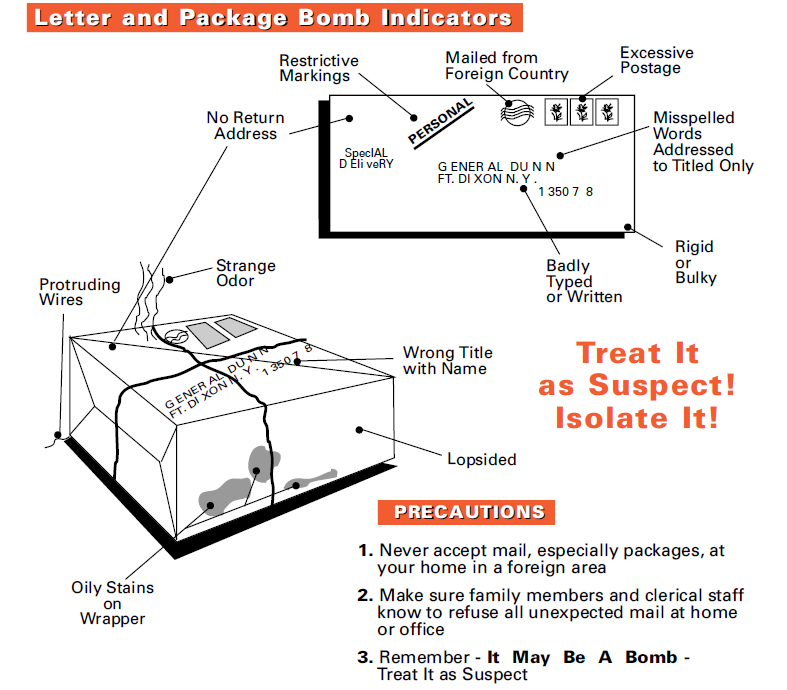
Step 1: If you discover a suspicious item or package….
- Leave it untouched and secure area until campus safety or first responders arrive.
- Stay away from the package and refrain from touching or moving it in any way.
- Go to a telephone.
Step 2: Call campus safety and report a suspicious item. You may be asked to assist in a search because you are familiar with the area. If so directed, evacuate your area.
Step 3: If you notice any of the following characteristics pertaining to suspicious packages, please take immediate precautions:
- Protruding wires or aluminum foil,
- Oily stains, discolorations or order,
- Ticking sounds, and/or;
- Excessive security material such as masking tape, string, etc.
Shelter in Place / Lockdown / Evacuation
CLICK HERE TO CALL CAMPUS CONTACT NUMBERS
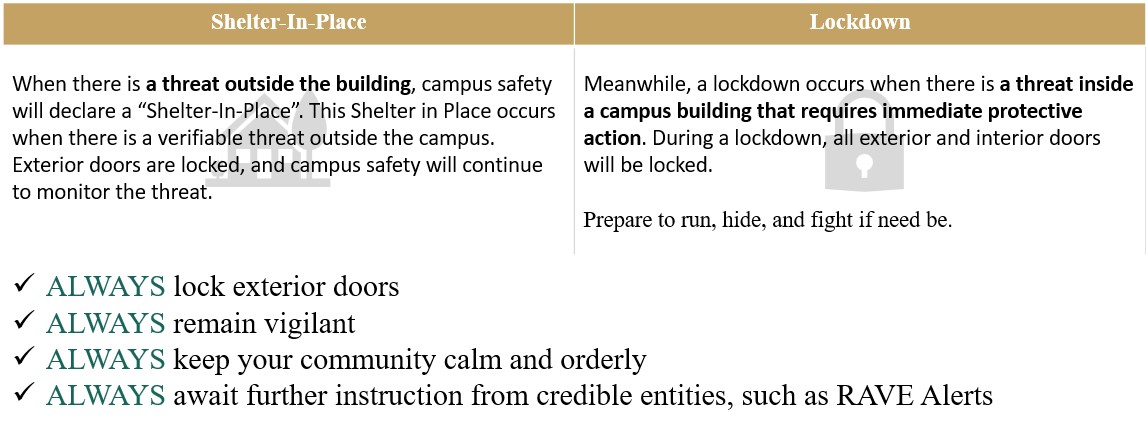
Shelter in Place
Definition: In the event of an internal or external disaster, if there is evidence of possible harm to students, visitors, staff, or faculty, an order for protecting yourself in your current location may be given.
Stay in your current location. If outside, move immediately to the nearest building and await further instructions.
Actions:
- Campus safety and/or administration will initiate and communicate a shelter-in-place order via RAVE.
- Ensure all personnel are inside of campus buildings, facilities, and rooms.
- If possible, account for individuals that you are supervising in your area.
- Secure points of entry, doors, and windows.
- Keep sheltering individuals away from points of entry.
- All personnel should remain in the secured area until an “All Clear” announcement Is made via RAVE or by emergency personnel.
Lockdown
Definition: A lockdown occurs when there is a threat inside a campus building or outdoor space that requires immediate protective action. During a lockdown, all exterior and interior doors will be locked.
Prepare to run, hide, and fight if need be.
Actions:
- Participate in all actions mentioned in the shelter-in-place event.
- Campus safety and/or administration will initiate and communicate a lockdown order via RAVE.
- If possible, lock and barricade doors using heavy furniture.
- Silence all noise making devices, including phones, TVs, radios and computers.
- Hide from doorways as much as possible: Be out of the active threats view, provide protection if shots are fired in your direction, do not trap or restrict your options for movement, and remain quiet.
- Do not open doorways under any circumstances until an official all-clear message has been shared via RAVE alerts.
Evacuation
Definition: In the event of an internal or external disaster, if there is evidence of possible harm to students, visitors, staff, or faculty, an order of evacuation of your area may be given.
Leave your location at once. Evacuation requires everyone to exit a building, area, or campus.
- An order to evacuate a building or area of campus may be given by campus safety, administration, or emergency personnel.
- Occupants should use the nearest and safest exit when an evacuation order is given.
- Evacuate in a CALM MANNER and avoid blocking entrances.
- Based on the type of emergency, occupants may be asked to move farther away from the impacted area(s).
- Remain calm at all times and follow the instructions of your supervisor, professor, campus safety, and emergency personnel.
- Notify first responders of any persons with disabilities who may still be in the affected area or building.
Active Threat / Run, Hide, Fight
CLICK HERE TO CALL CAMPUS CONTACT NUMBERS
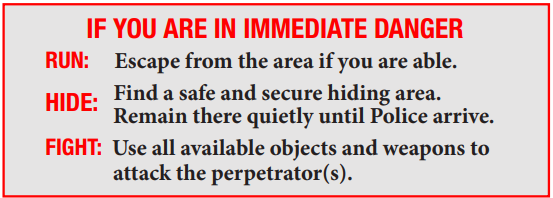
Definition: A situation where a person displays a weapon (knife, gun, etc.), especially in a threatening manner or threatening violence. Active threat can also be a bombing or hostage crisis.
Actions: Any person should immediately call campus safety or call 9 -1 – 1 directly upon recognizing a person with a weapon. State your name, location, and any other relevant information listed below:
When calling, clearly state if known:
- Campus, building, and floor – including address of campus
- Location of perpetrator
- Number of perpetrators
- Direction of travel of the perpetrator
- Physical description
- Number and type of weapons
- Number of potential victims
If in IMMINENT danger:
Run
- Have an escape route and plan in mind.
- Leave your belongings behind.
- Help others escape, if possible, but evacuate regardless of whether others agree to follow.
- Prevent individuals from entering an area where the perpetrator may be.
- Keep your hands visible.
- Follow the instructions of any police officers.
- Do not attempt to move wounded people.
Hide
If evacuation is not possible, bring all people in from public spaces, waiting rooms, lobbies or elevator areas. Find a place to where the perpetrator is less likely to find you. Lock or block doors with heavy furniture.
One hidden – do not open door until you hear an “All Clear” message through overhead announcements or a RAVE alert.
Your hiding place should:
- Be out of the perpetrator’s view.
- Provide protection if shots are fired in your direction (i.e., an office with a closed, locked door).
- Do not trap or restrict your options for movement.
To prevent the perpetrator from entering your hiding place:
- Lock the door.
- Blockage the door with heavy furniture.
If the perpetrator is nearby:
- Lock the door.
- Shut off the lgihts.
- Silence your cell phone/pager.
- Turn off any source of noise.
- Hide behind large items.
- Remain quiet.
Fight
As a last resort, and only when your life is in imminent danger and you can not evacuate, attempt to disrupt and/or incapacitate the perpetrator by:
- Acting as aggressively as possible against them.
- Throwing items and improvising weapons.
- Yelling.
- Always commit to your actions and follow through once you have made a decision.
How to act when law enforcement and help arrives:
- Remain calm and follow officers’ instructions.
- Put down any items in your hands (i.e. bags, jackets, phone).
- Immediately raise hands and spread fingers.
- Keep hands visible at all times.
- Avoid making quick movements toward officers such as attempting to hold onto them.
- Do not stop to ask officers for help or direction from which officers are entering the premises.
Laboratory Emergency Response
CLICK HERE TO CALL CAMPUS CONTACT NUMBERS
Spill Response
- Alert people in the immediate area to evacuate to a safe distance. Secure immediate area to prevent access and exposure to personnel.
- Notify your institution’s Campus Safety/Police. Only dial 911 if there is a medical emergency and/or fire.
- Attend to injured or contaminated persons and remove from exposure, if its safe to do so.
- Clean up chemical spill if you are trained to do so and you have the approrpiate equiptment avaliable.
- Get a spill kit and put on appripriate personal protective equiptment including splash goggles, chemical resistant globes, and a long-sleeved lab coat.
- Consult a Safety Data Sheet for hazard infomation and clean up instrustions. Use the appropriate decontamination, inaction, destruction, and/or disposal methods.
- Control the source and confine the spill to a small area using spill kit supplies. Avoid walking in spill or breathing vapors.
- Treat chemical if necessary and absord free liquid using approrpiate material
- For corrosive liquid use a neutralizer
- For flammable Ause an absorbent such as kitty litter, vermiculite, or specific solvent absorbent from your spill kit
- Never use organic material if cleaning up nitric acid or concentrated sulfuric acid. Kitty litter or vermiculite are good options
- If the spill material is a solid, clena debris with a dust pan and hand broom.
- If there is broken glass with the spilled liquid, sue tweezers to collect the class.
- Clean residue with water.
- Collect debris in apprioriate container, tightly seal or close container, attatched a Hazardous Waste Tag, and move the waste to your Satilite Accumulation Area.
- Contact your safety representative or building manager to esnrue that all emergency supplies are replaced.
Inert Compressed & Liquified Gas Release
For uncontrolled release, evacuate the lab area and contact facilities management and campus safety/police. For minor leaks, check for leasks in gas delivery system.
- If a leak is found, shut off the cylinder, and then righten hose or pipe connections.
- Never attempt to repair a leak at the valve threats or safety devices.
- Ventilate the area by opening windows, if possible.
Natural Gas Leak
- Activate the fire alarm if you think there is an immediate danger.
- Cease all operations and alert others in the immediate area.
- Extinguish all open flames.
- Ventilate area by opening windows, if possible and safe to do so. Check for open gas sources and or nearby use of mercaptans. If no source is found and oder persists, evacuate the area.
- Notify facilities and campus safety/police.
Fire and Evacuation
- Evacuate all individuals who can safely do so.
- If you can do so safely – close, secure, and/or cover the select agent and/or toxin or containers of select agents and/or toxins.
- Close all fume hood and biosafety cabinet sashes before exiting the area.
- Unplug any equipment that may cause a hazard upon being reactivated.
Hazardous Materials on Skin or Splashed in Eye
- Remove contaminated clothing, shoes, jewlery, etc.
- Immediately flood exposed areas with lukewarm water from safety shower, eyewash, or faucet for at least 15 minutes. Use soap on skin for biological/blood exposure. Hold eyes open to ensure effective rinsing behind both eyelids.
- Immediately after rinsing, obtain medical attention.
- Review Safety Data Sheer (SDS) and report the incident to your insitutions laboratory authorities.
Personal Exposure or Injury, First Aid, and Medical Emergency
- Immediately remove the patient/victim from the source, if it can be done safely.
- Remove contaminated clothing, shoes, jewelry, etc.
- Immediately flood exposed areas with luckwarm water from safety shower, eyewash, or faucet for at least 15 minutes. Use soap on skin for biological/blood exposure or needle stick/contaminated sharp item. Hold eyes open to ensure effective rinsing behind both eyelinds.
- Review the Safety Data Sheet to determine medical intervention for select agents and/or toxins used in laboratory settings at our institutions.
- After intial steps, seek medical attention immediately.
Animal-Related Injuries or Exposures
- Immediately stop what you are doing and secure the animal in its cage if safe to do so.
- EYE EXPOSURE: Immediately rinse eye(s) in an eye wash for 15 minutes.
- BITE/SCRATCH/CUT: Find the nearrest bite kit.
- Wash the wound with a scrub brush for 15 minutes.
- Rinse the wound with sterile saline solution and bandage with sterile gauze.
- Obtain medical attention for ANY exposure or possible exposure to a
- Report the incident.
Power or Ventilation Failure and Natural Disasters
It is important to know that during a power failure the HVAC system in laboratories, including the fume hoods, will no longer provide the safe exhaust of hazardous vapors and gases from the lab space.
- Ensure all individuals have safely evacuated from the lab if necessary.
- Close, secure, and/or cover the select agent and/or toxin or containers of select agents and/or toxins.
- Unplug any equipment that may cause a hazard upon being reactivated.
- Transfer containers of select agents or toxins to their secure storage location.
- If the storage is within an engineering control (i.e., chemical fume hood, biosafety cabinet), lower the sash and post a sign that writes “TOXINS-DO NOT USE UNLESS AUTHORIZED TO USE”